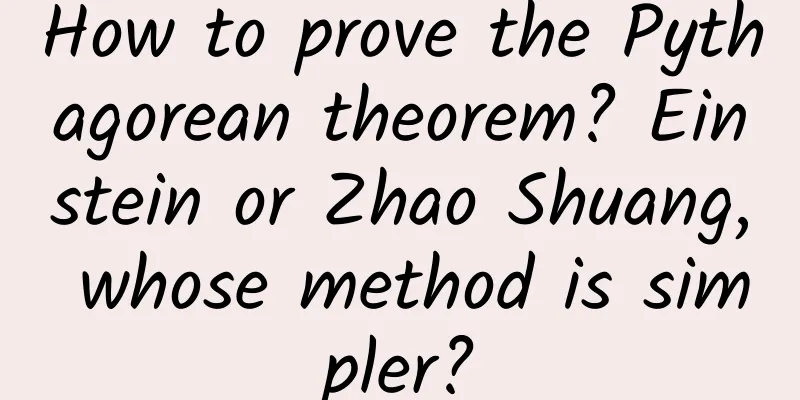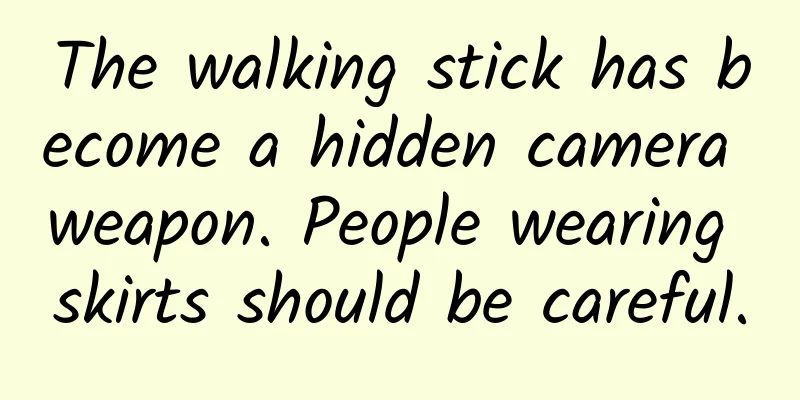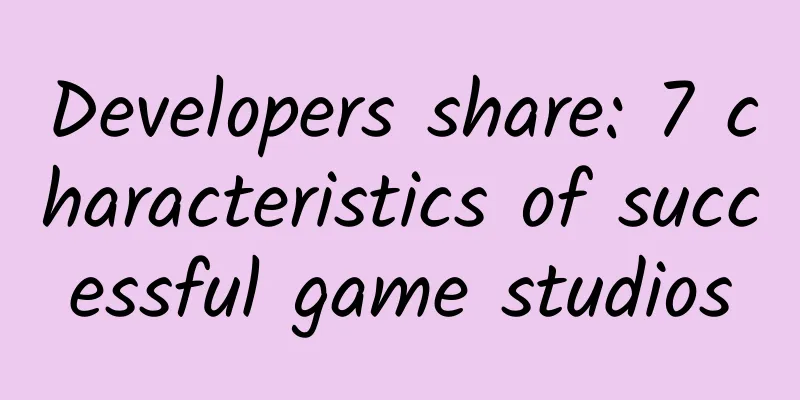How to prove the Pythagorean theorem? Einstein or Zhao Shuang, whose method is simpler?

|
The history of the "Pythagorean Theorem" can be traced back to the 1st century BC, and the book that introduced the Pythagorean Theorem was "Zhou Bi". Later in the Tang Dynasty, "Zhou Bi" was listed as a textbook for the Ming Suan subject in the Imperial College, and was renamed "Zhou Bi Suanjing". In ancient China, the short side of a right triangle was called the "hypotenuse", the long side was called the "leg", and the hypotenuse was called the "chord". The relationship between the hypotenuse and the leg was clearly recorded in the Zhoubi Suanjing, which is what we know as the square of the hypotenuse plus the square of the leg equals the square of the chord, hence the name "Pythagorean Theorem". However, it was not only our ancestors who discovered this theorem. About half a century later, the famous ancient Greek mathematician and philosopher Pythagoras also discovered this law, so the Pythagorean Theorem is also called the "Pythagorean Theorem". However, discovering the Pythagorean theorem is one thing, and proving it is another. So far, there are nearly 500 known methods of proving the Pythagorean theorem in the world. After the Zhoubi Suanjing, the first Chinese to prove the Pythagorean theorem should be a man named Zhao Shuang. Zhao Shuang was a famous mathematician and astronomer in ancient my country. He was born in the late Eastern Han Dynasty and was a native of Wu under the rule of Sun Quan during the Three Kingdoms period. His greatest contribution to mathematics was his in-depth study of the Zhoubi Suanjing and the creation of the Zhoubi Suanjing Notes. In this book, he used a simple method to prove the correctness of the Pythagorean theorem. How did Zhao Shuang prove the Pythagorean theorem? He pieced together four identical right triangles to form a large square, and the four sides of the square are the chords of the four right triangles, that is, the hypotenuse. From the picture we can see that the large square put together by Zhao Shuang is composed of four right-angled triangles and a small square. Obviously, the area of the large square is equal to the area of the four right triangles plus the area of the small square in the center. What is the area of the large square? It is the "squaring of the chord". What is the area of the small square? It is the square of "leg minus hypotenuse". What is the area of the right triangle? It is one-half of "leg multiplied by hypotenuse". Now we can list the three areas as an equation, that is: (leg-hypotenuse)²+(4X1/2XlegXhypotenuse)=chord². Simplifying this equation, we can get the final result, that is: hypotenuse²+leg²=chord². The Pythagorean theorem has been successfully proved. Zhao Shuang was the first Chinese to prove the Pythagorean theorem after the Zhoubi Suanjing. The first person in the world to prove the Pythagorean theorem should be Euclid, because although Pythagoras was the first person in the West to propose the Pythagorean theorem, his proof method has not been passed down. Although Zhao Shuang was not the first person in the world to prove the Pythagorean theorem, his proof method is simple enough. So, has anyone else proposed a simpler proof method? Yes, for example, the physicist Einstein, who we are all very familiar with, used his own method to prove the Pythagorean theorem when he was 11 years old, and the method he used was also very simple. Let's see whose method is simpler compared to Zhao Shuang. The method used by Einstein is to split the right triangle into two. Einstein used the right angle of the right triangle as the vertex and drew a perpendicular line perpendicular to the hypotenuse, so the right triangle was divided into two. The situation is very interesting now. There are three triangles in the whole picture, namely the small triangle, the large triangle and the largest triangle before the division, and these three triangles happen to be similar triangles. So-called similar triangles are equal in corresponding angles and proportional in corresponding sides. The hypotenuses of the three triangles are the hypotenuse, leg and chord of the original triangle respectively. After that, Einstein used the hypotenuses of the three triangles as the sides of the square to draw three squares of different sizes, and the areas of the three squares are the hypotenuse², leg² and chord² respectively. Since the three triangles are similar triangles, the ratio of each triangle to the corresponding square is the same. That is to say, the sum of the areas of the two small triangles is equal to the area of the large triangle, so the sum of the areas of the two small squares is equal to the area of the large square. Since the areas of the three squares are: hypotenuse², leg², and chord², we can write: hypotenuse²+leg²=chord². Obviously, Einstein's proof method is also relatively simple, but in comparison, Zhao Shuang's seems to be simpler. But don't rush to draw a conclusion, there is a hidden part here, that is, Einstein actually didn't need to draw a square. Because for similar triangles, the ratio of the areas is equal to the ratio of the squares of the side lengths, so we can directly conclude that "hypotenuse²+leg²=chord²", so that its simplicity is comparable to Zhao Shuang. So why did Einstein draw a square like a superfluous addition? It is probably because the 11-year-old Einstein did not know that the ratio of the areas of similar triangles is equal to the ratio of the squares of the side lengths. For more information, please follow the official account: sunmonarch |
<<: Are there any stomach aches that you think are harmless but are actually very dangerous?
>>: Many Nobel Prizes are actually related to it! Do you consume enough every day?
Recommend
Bible Emoji: A Bible written in emoji
On June 1, Bible Emoji was launched on the Apple ...
Detailed explanation of the Douyin agent operation service process
Account positioning 1. Filter user groups Through...
This fish is the best for hot pot, because it is "sick"! But there is a type of people who should never eat it...
In Guangdong, there is a very special delicacy. I...
Capybara is angry! Why do capybaras, which are emotionally stable, fight each other?
Recently, some tourists photographed two capybara...
How to plan online live broadcast events?
Some anchors and guilds are keen on increasing th...
How do mini program development companies use mini programs to realize marketing scenarios?
How do mini program development companies use min...
Event Promotion Plan | Key points on event design and traffic considerations!
To make a successful event, you often need three ...
Analysis of public opinion in the automotive industry in March 2023
According to statistics from the China Associatio...
New Studio "Wen Jun Screenwriting Master Class" enters the film industry from the creation
The screenwriter is the first person in the creat...
WeChat message reception delay? It turns out they are playing tricks, here's how to fix it with one click
We use WeChat every day. Have you noticed that so...
Zhang Ce: The Making of a Short Video Director, Short Video Creation Course
It’s simple and easy to understand, and you can t...
Video tutorial on techniques and methods for shooting short videos
Nowadays, many people find that as long as the sh...
How to create a WeChat vegetable selling mini program in Foshan? How to sell vegetables through WeChat mini program?
Today's industries are diverse, and many new ...
Feeling stressed and don't want to do anything? Try these 3 things to get back to a good mood!
Nowadays, people's pace of life is generally ...
![Slacking Thinking + Boss Cultivation Club · Paste and Copy to Make Money [Complete] Watch Online](/upload/images/67cc2ef3e8e47.webp)








